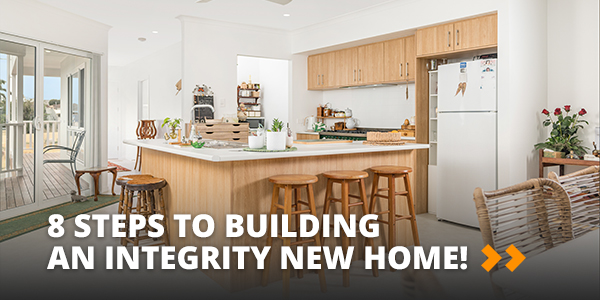CODE OF PRACTICE FOR THE PROTECTION OF CLIENT PROPERTY
Objectives
The scope of this code is to ensure appropriate care is taken to prevent or limit accidental damage to client property during building works being undertaken on or around existing buildings, structures, vegetation and vehicles. It also aims to provide a clear understanding of expectations between client and builder/ builders staff.
The primary focus is on renovation work as in the case of most new home builds, there is little or no vulnerable client property on site.
This code is limited to client property and does not address the health and safety of building occupants as this is addressed by Work Health and Safety legislation.
Building condition report
Prior to commencement of any work the builders must perform a building condition report including photos where possible, detailing any defect or damage that is preexisting. The Client or building occupant must provide unrestricted access to the builder for carrying out of such report. If the client or building occupants denies access to any area for the purpose of this report, the builder accepts no responsibility for damage done to these areas or any damage that may have been concealed by such access restrictions.
For the purpose of this report, the client is responsible to remove items off the floor or walls that may conceal preexisting defects. The builder accepts no liability defects or damage that could have reasonably been concealed by items on the floor or the walls such as pot plants, discarded clothing, artworks and the like.
The builder is to provide the client with a copy of this report prior to commencement of work. The report should contain a sketch detailing what areas the builder needs to occupy to gain access the work zone. These areas are hereafter are referred to as the affected zone.
The builder or builders’ staff or subcontractors engaged by the builders must not venture out of the affected zone. unless unforeseeable circumstances render it necessary or if they are invited to do so by the client or building occupant.
Unavoidable Damage. This code accepts that some damage and disruption to normal life, is either unavoidable or not cost effectively avoidable. For example, when jackhammering tiled floors. the normal procedure is to attach a vacuum cleaner hose to the jackhammer point. This method collects most of the dust but some does escape. To eliminate this would necessitate the purchase of expensive dust extraction equipment and or construction of dust barriers preventing the building occupants accessing certain areas of the building. The cost of which would have to be passed on to the clients. It is much more cost effective to limit the dust to bearable and safe levels and clean up on completion. Please note that seriously hazardous dust such as asbestos is dealt with under WH&S legislation.
Material deemed as due for replacement.In the event that a client has instructed the builder that certain building elements are to be replaced after the building works are completed. For example, carpets are to be replaced after the completion of a bathroom renovation. These buildings elements are to be protected as per normal unless this is noted in the building condition report, or noted in the building contract, or if the client gives a written instruction to this effect.
Protection of carpets. This code generally accepts that carpet floors have a low susceptibility to abrasion and impact damage and generally dust is easily vacuumed off carpets, their susceptibility to wet material damage is high.
All area within the affected zone must be covered by either painter’s drop sheets and or a suitable plastic sheet such as concrete underlay. Where mechanical protection is necessary, the drop sheets must intern be covered by a plywood sheets or similar material. Please note, where risk of wet material and mechanical damage both exist, both methods of protection are necessary. And the wet material protection must be applied first. Building staff are not permitted to leave protected areas or set foot on any carpeted areas unless foot ware is removed. If WH&S regulations prevent the removal of foot ware, then floor protection is required.
Wet material protection is acceptable as dust protection, in the event were dust protection is the only risk present, it will be left to the discretion of the individual to either protect the carpets or clean on completion.
Protection of Tiled Floors. This code accepts, tiled floors have a low susceptibility abrasion damage. While wet material damage is in most cases cleanable, the cleaning of widespread wet material damage is time consuming and best avoided. Susceptibility to impact damage is high. Susceptibility to dust damage is comparable to carpet floors.
As per carpet floor. Except for the application of a thicker blanket such as discarded blankets or old carpet can be used for protection against mechanical damage. In the case were mechanical damage risk is moderate or minor than care could be taken to prevent the risk of items being dropped. Larger items such as fiber cement sheets or long structural members should be handled by two people.
Polished timber floors and timber decks. As per carpet floors with additional attention to the fact that these floors are more susceptible to abrasion damage. Builders must acknowledge that material like sand and tile chips can become caught under drop sheets.
Exposed concrete paths and driveways. These items have a moderate susceptibility to abrasion and impact damage and Wet material such as paint or tile adhesives can be difficult to clean off.
Were the wet material is paint, the concrete must be covered with drop sheets as per carpet. Were the material such as tile adhesive is carried over concrete slabs, but no work is performed above such areas, it is acceptable to visually check the areas after travelling over and any spillage cleaned immediately. If work is performed above such an area the concrete must be covered by drop sheets.
Were high the risk of impact damage is present (such falling bricks or heavy metal objects) the concrete must be covered by sheets of plywood, MDF or similar material.
The builders must not assume these will be covered eventually unless the client has given instructions to that effect or the building contracts, plans or specifications indicate as such.
Face Brick Walls. Face brick walls are to be kept clean from paint, tile adhesive, cement and such like materials. Mixing of tile adhesive must be performed at least 3 meters from a face brick wall and the wall must be checked after every mix is performed and any spots of adhesive must be cleaned immediately. If any spots are missed, they can be either mechanically cleaned or by applying Hydrochloric acid.
Plaster board walls and door jambs. In most cases these can be avoided by taking care when handling material. Large items should be handled by a two-person lift. any wet material can be cleaned with a damp sponge.
- Discarded tile adhesive should be placed in or on an empty bag or similar item so it can be easily removed after it has dried. Wastewater from rinsed out buckets can be discarded on to lawns in an inconspicuous area. larger deposits of adhesive should be picked up. Smaller deposits can be hosed into the grass. This code accepts that some visible evidence will be present on completion of work that will be left until the grass grows up through it. This is considered unavoidable damage.
Mechanical damage to lawns from excavation machines such as skid steer loaders and excavators is for the most part unavoidable damage. Confining the use of these machines is to areas within the work zone is desirable but not always possible. This damage is best addressed by top dressing or turfing of lawns after completion of work. The cost of lawn repair may or may not be included in the building contract.
Client Furniture and Cabinetry. Where possible all furniture should be moved out of the work zone and to a safe distance away from the affected zone.
In the case were building work to be performed is of a smaller scale and does not require the moving of large materials, equipment or substantial quantities of demolition waste, (for example readjusting doors or painting a window architrave) it is acceptable to for builders move in close proximity to furniture provided the furniture in question is adequately protected against any likely damage.
The client or building occupant is responsible for covering of dust sensitive electronic appliances with drop sheets or garbage bags or similar.
The builders must not place tools, equipment, building materials or demolition waste on client furniture.
Glossary
- . For the purpose of this Code the builder is the person, company or representative of such person duly authorized to act on the builder’s behalf.
Client. The owner of the building or a person duly authorized by the owner to act on their behalf. If the building occupant is not the owner, they are not considered to be such person unless authorized by the owner.
Client Property. Any item owned by the client that is in or near the areas occupied by the construction personnel for the purpose of performing the work or in areas necessary for access and egress to this location.
- Any fine dry material that has the potential to become air borne, generated by work such as but not limited to sanding, grinding, cutting and jack hammering.
Wet material. Material that is applied in a liquid or semiliquid form that will harden over time. For example, adhesives, waterproofing compounds, plastering compounds, cement and silicone.
Mechanical Damage. Damage occurring as a result of mechanical means such as impact, abrasion or vibration.
Unavoidable damage. Damage that is not economically to reasonable avoid.
Unforeseeable damage. Damage that is not reasonably foreseeable prior to commencement of works.
Work Zone. Any area were building work is performed.
Affected Zone. Any area outside of the work zone affected by the work.



